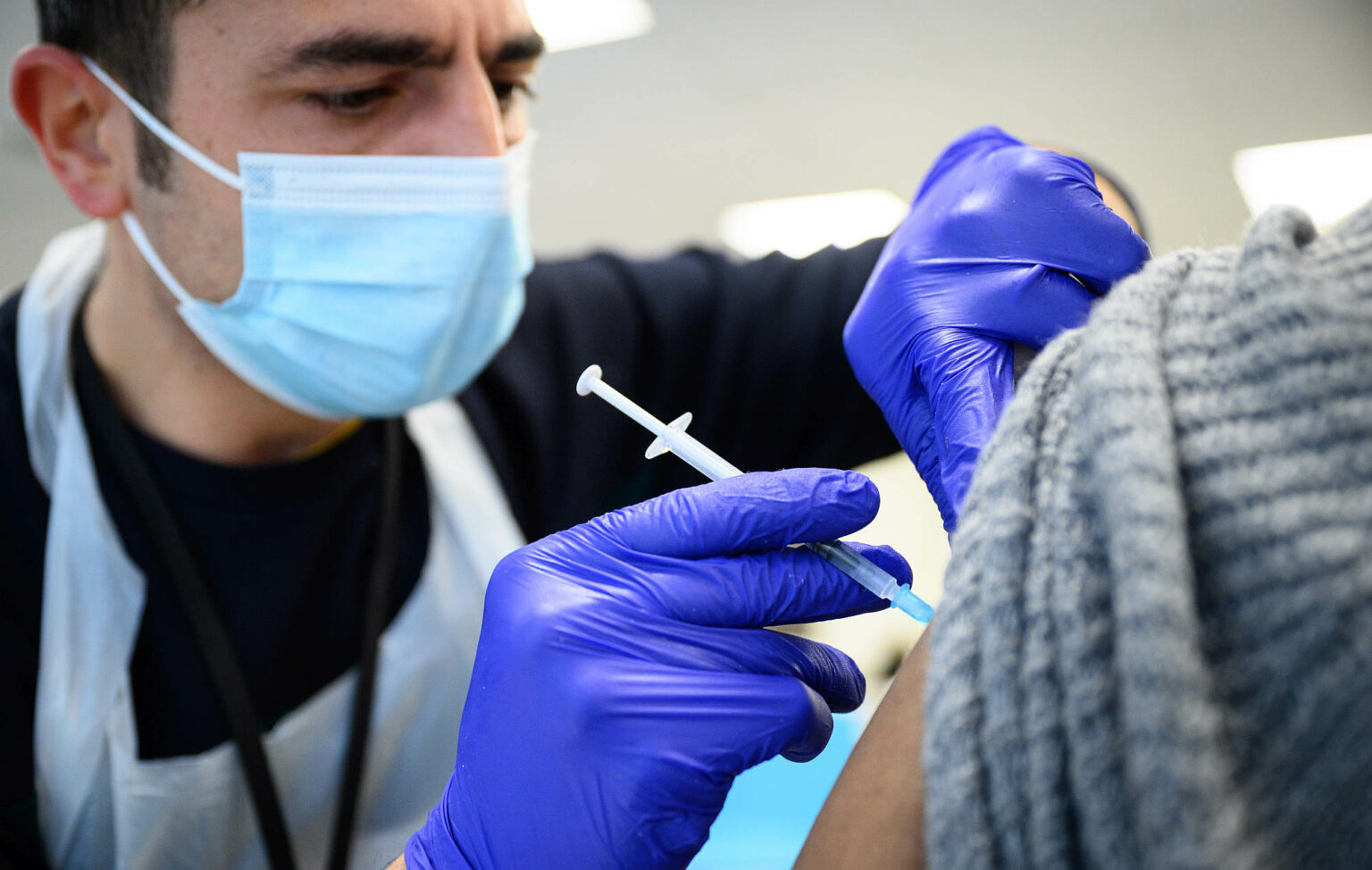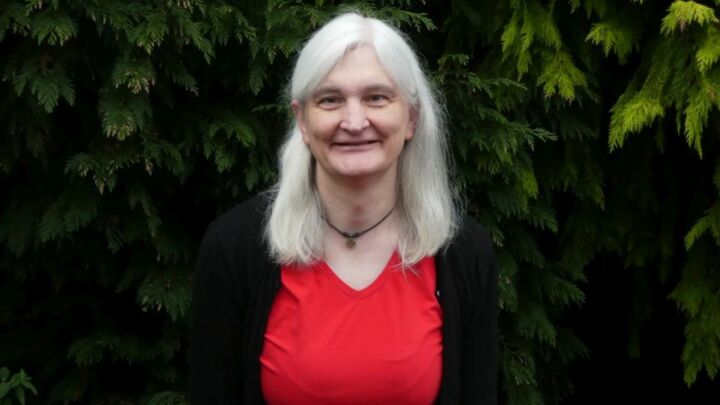
Long-read
It’s time to put Covid behind us
England’s ‘dangerous and unethical experiment’ of lifting all restrictions has been a resounding success.
A year ago this week, Pfizer announced the results of its Covid vaccine trials. Two weeks later, AstraZeneca announced the results of the phase-three trials for its own candidate vaccine. Both were impressive. By 8 December, jabs were going into arms and the world was breathing a sigh of relief. It took another gruelling lockdown in Britain to suppress the coronavirus while the vaccines were rolled out, but the end was in sight.
If we could have seen then where we are now, most would have agreed that things have gone… pretty well, actually. The so-called Delta variant caused this year’s restrictions to last longer than we would have liked, but fears about a new variant escaping the vaccine turned out to be unfounded. The vaccine roll-out was a triumph and there was less public hesitancy than expected.
We always knew there would be an exit wave and we always knew that the vaccines would not prevent every hospitalisation and death. Those who were paying attention understood that Covid had become an endemic disease that most people would get in their lifetime, perhaps more than once. We always knew that the name of the game was to get the risks down to the level of flu.
Mission accomplished. In the six months between October 2020 and March 2021, there were 3.8million recorded cases of Covid in the UK and 85,000 deaths. In the following six months, during which restrictions were reduced to nothing, there were 4.8million recorded cases and 14,000 deaths. Based on these figures, the case fatality rate fell from 2.2 per cent to 0.3 per cent. Since around half of all infections are not recorded, the infection fatality rate is now around 0.15 per cent, not much different to seasonal influenza. And remember that these statistics include a large number of deaths among the unvaccinated. For fully vaccinated people, the risk of dying if you catch Covid is lower still.
A glance at the Covid mortality figures shows us that we are more or less where we expected to be. After two surges of the epidemic – in spring 2020 and winter 2020-21 – we have reached endemicity. A graph of hospital occupancy looks very similar. The numbers go up a little, they go down a little, but it is nothing a half-decent healthcare system couldn’t handle. Covid will remain a health issue for many years – possibly forever – but it is no longer a civil-liberties issue. Arguably, it should only be a minor news story from now on.


So why the hell are so many people still losing their minds over it? I don’t just mean the Covid-denying ‘smiley’ contingent, who adopted the Acid House logo as their emblem last autumn. They went crazy a long time ago. With the chances of another lockdown dropping close to zero, these erstwhile ‘lockdown sceptics’ went full anti-vax and now scour the internet for sudden cardiac deaths of athletes and the unexpected death of anybody under the age of 60, whispering darkly about the ‘clot shot’. I’ve written enough about these lost souls, but they are not the only fanatics entrenched in an extreme position.
Their opposite number, the Zero Covidians – or ‘frownies’ – have shown no contrition for being wrong on an epic scale since they described England’s ‘Freedom Day’ as a ‘dangerous and unethical experiment’ in July. The prospect of 100,000 cases a day was, in their view, nailed on and there was a real possibility of this rising to 200,000. Independent SAGE called on the government to revert to step two of the roadmap in which socialising indoors with anyone from outside your household was banned.
In the event, the number of cases per day peaked at just over 50,000 shortly before all restrictions were lifted. By the end of July they had fallen by half. Over the next two months rates rose and dipped in the manner of an endemic virus. Both smileys and frownies looked at the data, noted that things looked worse than they did at the same time last summer, when Covid rates were very low, and warned that winter was coming.
All it took was a mini-surge in October for tension to turn into hysteria again. On 20 October, NHS Confederation chief executive Matthew Taylor – who had warned in July that ‘dropping the requirements to wear masks and to socially distance… could lead to further mutations of the virus’ – called for measures, such as working from home and a mask mandate, to be reintroduced. He did this in a press release that began with the veiled threat that ‘[n]o one wants another national lockdown…’. Independent SAGE, the British Medical Association, various trade unions and every social-media user with #ToryGenocide, #JohnsonVariant or #FBPE in their profile joined the call for restrictions to be re-imposed. Britain was a rainy plague island, they said. The least we could do was take our lead from enlightened Europe where the virus was under control thanks to face masks and vaccine passports, they said.
No sooner had Labour leader Keir Starmer put his weight behind this campaign than it began to crumble. The infection rate peaked on 18 October before dropping back to levels last seen in August. As Eastern Europe suffered its worst outbreak yet, the calls to be more European became calls to be more like Western Europe and then to be more like the largest countries in Western Europe. With cases now on the turn in France and shooting up in Germany, Europe will soon be forgotten altogether. Britain currently has a lower reproduction (R) rate than any EU member state (except Romania). It is one of only five countries between Russia and Iceland where rates have been falling.
Needing a coping mechanism when the infection rate falls by a third is not healthy behaviour, psychologically speaking. But when cases began tumbling last month there was a tangible sense of disappointment from the #BorisTheButcher community. They insisted that it was nothing more than a temporary blip caused by the half-term school holidays – this despite the drop starting at least a week before the vast majority of schools broke up and despite that half-terms have never had such an impact on overall case numbers in the past. ‘Give it two weeks’, they said, as they so often do. When cases were still falling in November, they started a weird argument about when half-term was, as if the national infection rate hinged on a few private schools, the Isle of Wight and some factory towns in Leicestershire.
Much of the media dealt with the upturn in Britain’s fortunes in a much simpler way. They ignored it. In more than a few instances, they explicitly claimed that cases were still rising. Interviewing Boris Johnson on 2 November, two weeks after cases peaked, CNN’s lead anchor, Christiane Amanpour, asserted that ‘there’s a big spike in Covid in this country and the record here is worse than it is elsewhere in Europe’. The following day, deputy chief medical officer Jonathan Van-Tam was asked in a BBC interview: ‘Why are schools not putting masks in place, with cases rising in school-age children?’ And Sky News tweeted: ‘With the UK’s coronavirus epidemic escalating by the day, it’s no longer a case of if Plan B will be triggered but when, say experts.’
Everyone knows the media prefer bad news to good news, but there was something almost pathological about this refusal to look the facts in the face. Could it be sheer ignorance?
On 9 November, the Evening Standard reported: ‘UK Covid deaths soar to 262.’ And the Sun ran the headline: ‘UK daily Covid deaths hit 262 in highest rise in a WEEK.’ It was a Tuesday. Anyone with even a passing interest in the statistics knows that the NHS always reports fewer deaths over the weekend and then catches up with the backlog on Tuesday. It is therefore almost inevitable that the ‘highest rise in a week’ will be seen on a Tuesday and that the figure will appear to ‘soar’ if you compare it to a Monday (which is what the Evening Standard did). When compared to the previous Tuesday, however, the number of deaths had actually fallen.
Whether the result of mendacity or stupidity, the media’s eagerness to maintain a state of panic was almost enough to make you believe in conspiracy theories. For those who already believed in conspiracy theories, it was all the confirmation they needed.

Senior officials in the health service made matters worse by making outlandish claims which veered into anti-vax territory. The Health Service Journal quoted ‘one of the most respected chief executives in the NHS’ saying: ‘This is far worse than January – the vaccine hasn’t saved us this time.’ On the same day, the chief executive of NHS England, Amanda Pritchard, beclowned herself by telling the preposterous lie that we ‘have had 14 times the number of people in hospital with Covid-19 than we saw this time last year’. When it was pointed out that there are actually 30 per cent fewer people in hospital with Covid than this time last year, she ‘clarified’ that she was comparing August 2021 to August 2020 and added the frankly unbelievable claim that she didn’t have more recent figures.
Pritchard told the original fib while calling on the public to get their booster shots. Perhaps she thought that by massaging the figures she could turbo-charge national paranoia and put a rocket under the vaccination campaign. If so, she may have been mistaken. Her words were nectar to the smiley-faced ‘sceptics’ since they appeared to prove that the vaccines were not only useless but that the hospitals were virtually empty last November, as they had claimed at the time.
Oh what a tangled web we weave. It is at times like this I envy people who pay no attention to the media, social or traditional. If the only things you knew about the Covid situation in January was that we were in lockdown, we’ve got vaccines, and life would return to normal once everyone who wanted a vaccine had been given one, you would have lower blood pressure and a more realistic outlook than those who follow every twist and turn.
It is to the government’s credit that it has kept a cool head, ignoring the clowns to the left of them and the jokers on the right. The threat of vaccine passports was always a bluff to encourage young people to get their jabs. It worked well enough for the government to then shelve the idea and it is clearly reluctant to follow the authoritarians in Scotland and Wales by bringing them in. Despite the frownies’ feeding frenzy in October, health secretary Sajid Javid showed no sign of reaching for Plan B and made it fairly obvious that he was prepared to tolerate case numbers of 100,000 or more before he would abandon Plan A. This now looks less likely than ever. Chris Whitty and Patrick Vallance also seem fairly relaxed about the current approach and even the modellers have started to project a relatively painless end to the epidemic in the months ahead.
We can see why if we take a step back and look at how things have progressed since step three of the roadmap took place in May. The UK has got the bulk of its exit wave out of the way before November and is heading into winter with a wall of immunity, natural and pharmaceutical, among every age group. Fortified by booster shots among those who most need them, we have flattened the curve – just as the government intended at the start of the pandemic when it was foolishly following a plan designed for influenza. Now that the vaccines have pushed the mortality risk down to flu-like levels, the rationale for that plan finally makes sense.
What was the alternative? A virus as infectious as Delta was always going to rip through the unvaccinated population like a dose of salts and infect plenty of vaccinated people along the way. Waiting for immunity to wane or pushing the wave into the winter would have been counterproductive. The vaccine passports and face masks favoured by frownies might have had an effect on the margins, but Europe is now seeing how difficult it is to suppress the virus with such feeble tools.
If not Plan B, then what? School closures? Shutting down hospitality? Lockdown? Perhaps these measures can be justified to buy time in a serious crisis, but there is no crisis and nothing to buy time for. It’s time to put Covid behind us.
Christopher Snowdon is director of lifestyle economics at the Institute of Economic Affairs. He is also the co-host of Last Orders, spiked’s nanny-state podcast.
Pictures by: Getty
To enquire about republishing spiked’s content, a right to reply or to request a correction, please contact the managing editor, Viv Regan.







Comments
Want to join the conversation?
Only spiked supporters and patrons, who donate regularly to us, can comment on our articles.